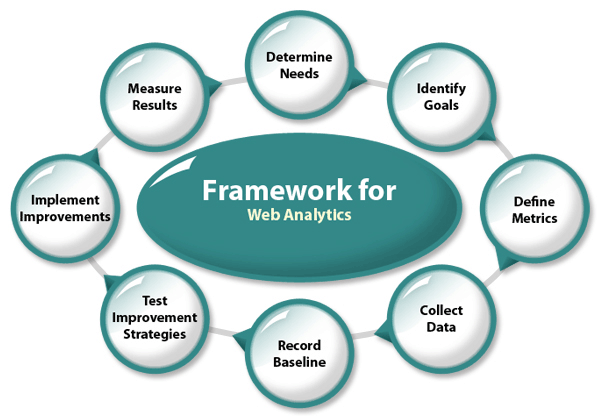 Understanding of types of web analytics metrics is important - counts, ratios, and KPI's. As Jason Burby mentioned: count is the most basic unit of measure, ratio typically is a count divided by a count, although a ratio can use either a count or a ratio in the numberator or denominator, key persormance indicator can be either a count or a ratio, it is frequently a ratio. All the metrics come donwn to questions likez: how many visitors do we have? where are they come from? how much purchses do they make? etc. Then we need to understand how to use those metrics to manage and understand our web site.
Understanding of types of web analytics metrics is important - counts, ratios, and KPI's. As Jason Burby mentioned: count is the most basic unit of measure, ratio typically is a count divided by a count, although a ratio can use either a count or a ratio in the numberator or denominator, key persormance indicator can be either a count or a ratio, it is frequently a ratio. All the metrics come donwn to questions likez: how many visitors do we have? where are they come from? how much purchses do they make? etc. Then we need to understand how to use those metrics to manage and understand our web site.Before we do any analysis, it is essential to understand the metrics framework. They are two types: MTC metrics (KPIs) that measures to control and usually answers those question of "How much?", "How Many?", or "How Often"; and MTA metrics that measures to analyze and often to answer why, who, what...? Using the metrics frame to design a comprehensive metrics plan , we can have a clear direction and use MTC and MTA metrics cooperatively for our analysis.

Web analytics help businesses identify their target audience, improve bounce rate, and increase ROI by aligning resources to right channels / campaigns and many more. Personally I have never had any experience with web analytics and this is perfect introduction course.
One more thing, I don't like the fact that google's referral is everywhere. Once I search something online, then the related products are everywhere no matter which website I go. Can I stop that? I just want to quietly search on something whenever I neeed it.
References:
1. Burby, Jason, Brown, Angie & WAA Standard Committe. "Web Analytics Definitions". Web Analytics Association. Page 3.
2. Strupp, Paul G. "An Introduction to Web Metrics". Sun Miscrosystems.


This is informative Web Analytic post really very useful!!!
ReplyDeleteGranular Analytics
Analytics for Micro Markets
Hyper-Local Data
Hyper Local insights